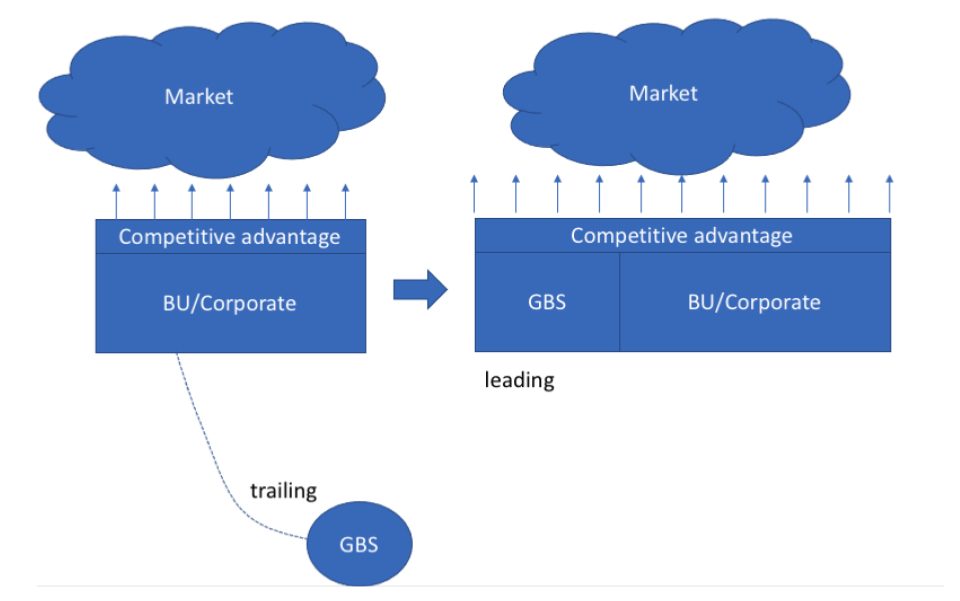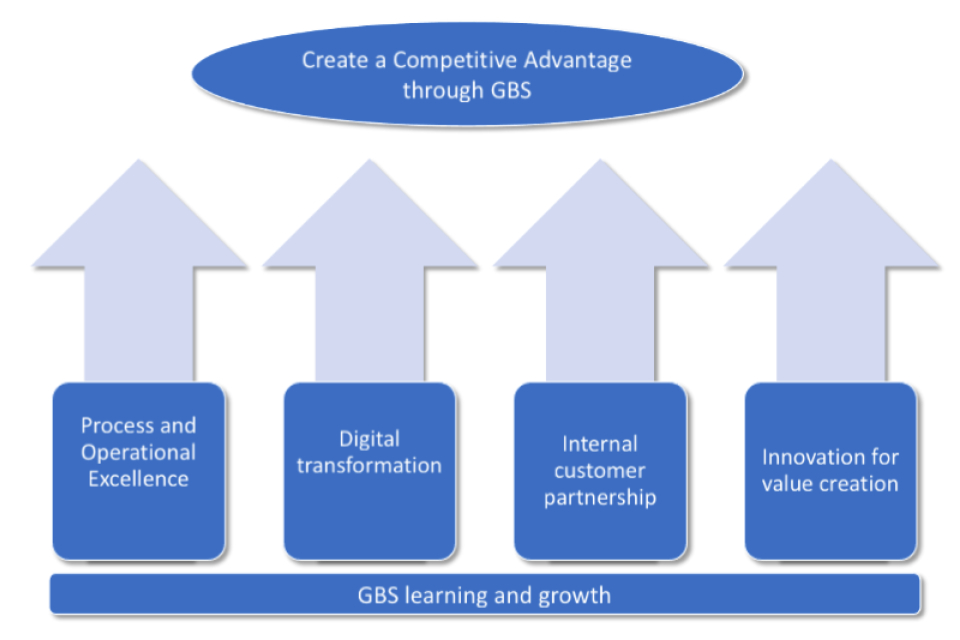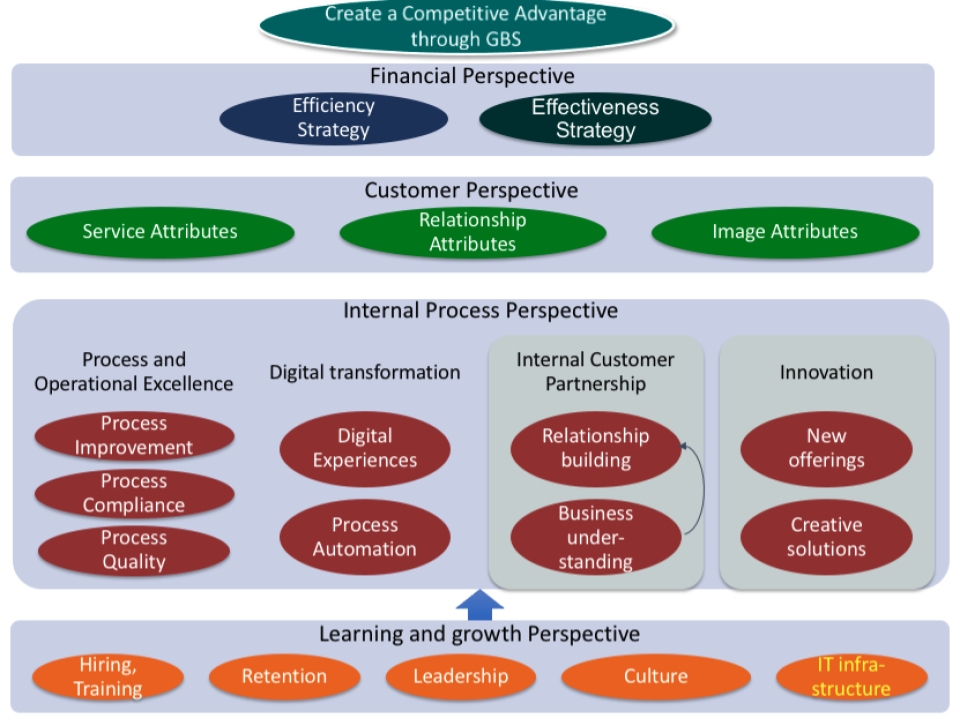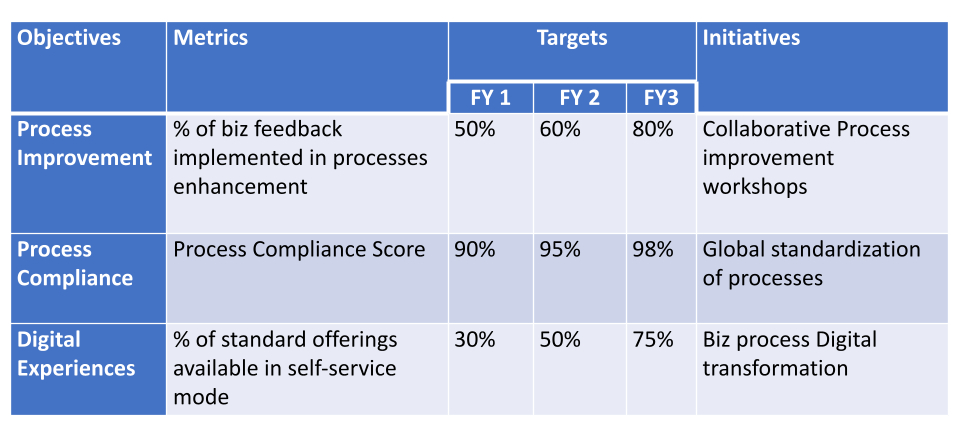Unlocking the power of GBS: How shared services can deliver competitive advantage

It may be counter-intuitive but captive support functions, or shared services, can be made to deliver a strong competitive advantage for medium and large organisations. It is better not to outsource such services, as is in vogue currently, unless these are non-strategic, mundane and repetitive. A strategy-focused captive GBS (Global Business Services) indeed has the potential to get you the business edge in this era of transient competitive advantages, and drive tremendous value. Yet, for most organisations, this potential remains untapped. Worse, the outsourcing partners gain much value to grow new business models.
In its modern form, GBS represents the erstwhile support functions consolidated as a centralised service delivery model. GBS typically serves as a single enterprise organisation, acting almost like a business, fully in control of the processes, the budget and the reporting lines. It incorporates multiple functions (Finance, HR, IT, Administration, Procurement, etc.), with services delivered in a seamless manner across all internal SBUs at international locations, aligned with local needs but with global thinking.
With a major thrust on outsourcing for cost advantages, discarding all non-core services from in-house to external parties will not be a great idea for a number of reasons including value creation by innovation and customer insights. By setting up a GBS, captive shared services, outsourcing, and centres of excellence (COEs) to serve multiple business units, with end-to-end service delivery focus, can all be done without losing much cost advantage. This is typically done through a combination of onshore, offshore, and in recent times, even virtual workplaces. Many enterprises in the pharmaceutical and healthcare services industries are embracing this model.
So why are Fortune 500 companies lagging behind on this, and instead giving the IT companies more business?
While at a structural level such reorganisation of the internal services may have happened, our research finds that the typical perspective of the corporate and business units (BUs) towards GBS has not changed much over the years, especially in developing GBS organisations. GBS is still considered to be “backstage”, “not adding much business value”, and seen as an “unavoidable devil”. What’s more, they are perceived to be a “pain in the neck” due to bureaucratic processes in the areas of compliance, standardisation, policies etc and their non-alignment to business. BUs are often seen complaining that GBS does not understand the real needs of the business, which are ever-changing, and a dismal lack of agility can be witnessed in the GBS folks.
GBS, on its part, has its own issues and mindset, especially in the early stages of its formation, that contribute further to its being perceived as a sidekick of the corporate world. Many GBS organisations operate in a highly reactive manner, frustrated that they are always “at the mercy of the business”, and being “taken for granted”. GBS complains that BUs and corporate do not see the value it provides. Instead, it is pushed to meet the ends of compliance, dynamics of changing business requirements, and meeting the high expectations of internal customers. Thinking that they are always “caught hold of” when things don’t go well, and not even acknowledged if things do, GBS frequently finds itself degenerating into micro, operational issues even though the very purpose of the structuring was strategic in nature.
A possible new breakthrough

While all this is happening, we also see progressive GBS organisations driving breakthrough strategic thinking. The ultimate possibility? GBS can be a competitive advantage to the business, with scalability and new expansions being the most obvious business value. With GBS strategising itself correctly, it can strongly differentiate itself in ways not thought about conventionally, and can yield substantial leverage. The above diagram represents this possibility.
With appropriate systems in place, businesses can springboard on top of GBS to focus on what is critical, while the rest is completely taken care of by GBS. This enables businesses to venture into newer opportunities and take risks, where otherwise conservatism prevails. Moreover, a captive GBS has the same work culture as the parent company and data-driven analytics can provide plenty of new insights for the parent to drive new areas of business. In fact, GBS can be made to encourage BUs to take the plunge with the assurance of a strong backbone of support. At peak efficiency, GBS in the conventional form literally becomes invisible, with BUs simply working with efficient systems within an encouraging climate. GBS becomes the internal nurturing environment in which business units can thrive. Such an advantage may not be easily available to competition.
The below picture captures typical GBS value propositions with increasing levels of maturity. At the basic level, GBS only provides the required services in a timely manner with quality. Thereafter efficiency calculations start ticking in through its cost effectiveness. We have observed that many organisations stop at the basic level, which is just the beginning of value creation. With cost-effective quality services being delivered consistently, at the next level, GBS strives to create delightful experiences for its internal customers.

Going further, more mature GBS organisations create the value of solving business problems beyond conventional transactional needs. This builds the BUs’ trust on GBS, and they start taking smaller risks, which other-wise they would not have done. With some experience in such value-added services, GBS now realises that they need to deepen the relationship with businesses to keep creating value. So they assume the role of a business partner. This enables businesses to look at GBS as more than a service provider.
At this stage GBS can give significant business insights through data analytics. As GBS’ understanding of the business grows even deeper, it is truly in a position to create differentiated value through their business insight, and deliver solid service experience, at the top of the ladder. This is a journey that any GBS organisation can make.
How GBS can make the breakthrough transformation
Our work with Fortune 500 companies and others have given us enough insights to drive a brilliant transformation for GBS of all types. Here, we outline a methodology that works well in practice.
First, GBS needs to envision itself in this position with conviction. The limited perspective of the corporate, and GBS’ mindsets hold them back from even considering this as a goal – often dismissing it as being unrealistic. Secondly, GBS needs to change its focus as the basic service provider, and figure out ways of creating new value for businesses. Needless to say, this requires working shoulder to shoulder with BUs in matters of concern to the BUs.
Once such opportunities are identified, GBS needs to organise and align different pieces of its strategy to actually deliver the differentiated value to the BUs/Corporate. It is critical in this scheme of things that GBS measures the resultant value that gets created in a manner that makes business sense. It also needs to measure and monitor its own internal drivers of this value and what it takes to create it. Finally, it needs to deploy a strategy execution system like the balanced scorecard to execute the entire strategy that it has put together.
Having a strategy map and scorecard for business is not a new idea. Several organisations for decades have been using tools to do so, the balanced scorecard being the most popular. The same model can be very effectively utilised by GBS to create this dramatic transformation in the new direction. A framework like Balanced Scorecard includes the following elements which GBS can powerfully implement:
A strategic destination for GBS: The end vision of what GBS would like to accomplish. This could be creating the competitive advantage, being in the league of top GBS organisations worldwide, or any other aspirational goal. Identifying such an end vision is also an opportunity for GBS to benchmark itself with global best practices in their industry
Defining the major financial outcomes of the strategy: GBS should examine the ultimate outcome that the corporate as a stakeholder would expect in financial terms. Clearly, the basic expectation of great services at the lowest possible cost determines the financial efficiency of GBS. In addition, GBS should also determine which outcomes will determine their effectiveness, such as various business impacts that GBS creates.
Consolidating the GBS customer value proposition: This forms a central piece of the GBS strategy. It should identify what specific value GBS would like to create for its customers. Various elements of the value created include service attributes like quality, timeliness, relationship, partnership, trust, and image attributes such as the internal brand. The GBS value ladder can be used to determine the specific value depending on the level at which the organisation is.
Articulating the themes of strategy and the processes needed to create value: Once the value proposition is defined, identify the major pillars of the execution game-plan to deliver it. These themes are groups of related actions that GBS needs to drive internally, and processes that GBS needs to excel in.
The learning and growth agenda for GBS: In order for the themes to be effectively driven, GBS needs to build a number of intangibles, which will enable effective execution of the strategy. Thee are b roadly in three areas: human capital, organisation capital and information capital. This includes the alignment of skills and right talent to changing business needs, the quality of leadership, the culture and climate needed for GBS to drive change, and relevant tech and digital infrastructural elements. These together define how the GBS organisation should constantly learn and evolve through its transformation.
Metrics to measure efficiency and effectiveness: Finally, in order to stay on course, GBS needs to have the right metrics along with the relevant targets for each of the items mentioned above. It needs to measure, monitor and manage what are most critical to the strategy.
The key point to note here is that adoption of such a scorecard necessitates GBS to reflect and spell out its game-plan on all of these aspects, giving a solid focus to its strategy. Articulating it this way gets all levels of employees to internalise the strategy and their roles in its achievement.
The concept of strategic themes for GBS

An important element of the GBS value creation strategy is finding the right themes to drive the value delivery. The above exhibit illustrates the typical generic themes, which represent short-term to long-term time span for driving sustained execution of strategy.
The first one is the theme of process and operational excellence. Apart from delivering the basic quality and timeliness of the services, this theme drives enhancement of processes within the GBS organisation. Improvement of efficiency of process through simplification, standardisation, benchmarking, etc., and governance, can directly add to the cost-effectiveness of GBS and also make their deliveries more predictable. In many ways, GBS can become the process expert in the organisation and drive multiple process agendas through this theme.
Process automation, data unification and digital transformation form the next major theme. At peak level, they can simply provide self-service alternatives including business analytics, and remain invisible for all transactional requirements. The likes of Amazon and Google will continue to provide more and more products and services through their own platforms, and users expect similar experiences. Digital transformation will drive GBS efficiency as well.
The third theme and one of the major aspects of GBS value creation is being able to work closely with business units in order to understand their real needs and issues. This makes it paramount that GBS builds deeper relations with businesses, and works closely with them real time. Relations with the business also helps GBS to build their own brand internally.
The final theme is about GBS enabling innovation and co-creation with BUs. This may need creative thinking, data insights, and other capabilities for opportunity identification and new sources of value creation. It could well be an extension of the digital transformation and may also result in devising newer offerings to the business through the expansion of GBS portfolio, or delivering creative one-off business solutions of high value.
Map the strategy to drive the transformation

The above figure shows an example of the GBS strategy map to anable every employee to align with and internalise the stragey. There is a GBS financial perspective which has two major aspects – efficiency of GBS in terms of the costs, number of resources, etc., while the effectiveness is about what is the extent of GBS impact on the business. The Customer perspective, Internal Process perspective and Learning and Growth perspective state the GBS objectives for the value proposition, themes, and learning and growth agenda, as outlined above.
Each of the bubbles shown in the map represents a strategic objective, which determines the direction of some aspect of the GBS strategy. Further, each strategic objective is measurable, and has metrics along with targets and initiatives to enable strategic performance management.
The scorecard will have all the objectives, definition, metrics, targets and initiatives. We have captured a couple of examples for illustration purposes only in the following exhibit.

In conclusion, we observe that a GBS scorecard can act as a major driving force to enable it to aspire to move from an operational to a strategic and from there to a differentiated value/competitive advantage creating role. The scorecard can also facilitate the process of consolidating the GBS strategy to move in the direction of this aspiration.
By developing GBS as a value-creating business partner, organisations can optimise the cost of outsourcing with the benefits of long term competitive advantages which otherwise get captured by the outsourcing companies. Perhaps this will be a game changer this year!
















